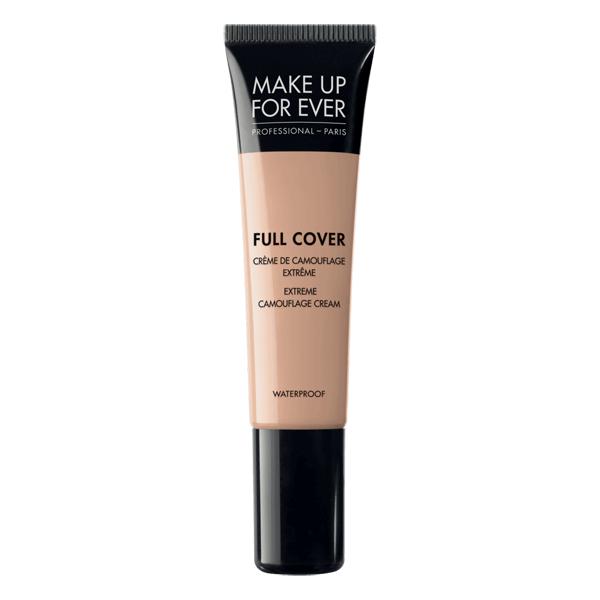Full Cover Concealer
An ultra long-lasting, oil-free, waterproof, concealer that provides full coverage with a matte finish. Makeup Forever Full Cover concealer is perfect for concealing the most extreme flaws, such as scars, severe skin damage, beauty spots, depigmentation or birthmarks. It's full coverage formula can even hide tattoos.
Size: 15ml
Waterproof and long lasting, it holds even under extreme conditions. This light and creamy concealer contains a high concentration of pigments that stay put, making it perfect for use on the face, as well as the body. It evens out the skin tone and camouflages imperfections with a matte finish.
After cleansing the skin, apply a non-oily moisturizing cream before applying the makeup:
1. Using your fingers or a brush, lightly dab a small quantity of Full Cover on skin blemishes.
2. Blend the edges to avoid unnatural lines.
3. Set the cream by applying the Super Matte Loose Powder #12 (Translucent Neutral) with a powder puff.
4. Wait 2 minutes, then remove the excess of powder using a brush.
Choose your color carefully. Full Cover tends to darken as it dries, so it is essential to choose a color that is two shades lighter than the skin tone.
Pro tip: on problem skins (acne, etc.), Full Cover can be blended with foundations (Face & Body, Mat Velvet +). After powdering, the result is spectacular and, depending on the amount applied, natural and well-set.
A shade two tones lighter than the skin should be tested before application. Leave to dry before choosing the best color (when drying, the volatile oils contained in the formula can change color)
For light corrections :
- Apply Full Cover using the nylon brush on clean skin or after applying a foundation to unify the complexion.
- For larger areas, Full Cover can be dabbed on with fingers or a sponge until the desired coverage is achieved.
For extreme cover :
- Full Cover should be applied directly on the skin, before the foundation. Repeat the application, leave to dry then powder using Super Mat Loose Powder (No. 0 Super Matt Loose Powder or HD Powder). (2 to 6 applications)
In both cases, Full Cover must be applied around the corrected area and blended in with the skin tone.
Subsequent makeup application is generally not necessary, but in the case of certain complexions, the makeup color should be blended with foundation (Pan Stick, Mat Velvet +) or with a lightly colored loose powder.
On problem skins (acne, etc.), Full Cover can be blended with certain creamy, at best waterproof foundations (Face & Body Liquid, Mat Velvet +). After powdering, the result is spectacular and, depending on the amount applied, natural and well-





































